Molding the future of mobility
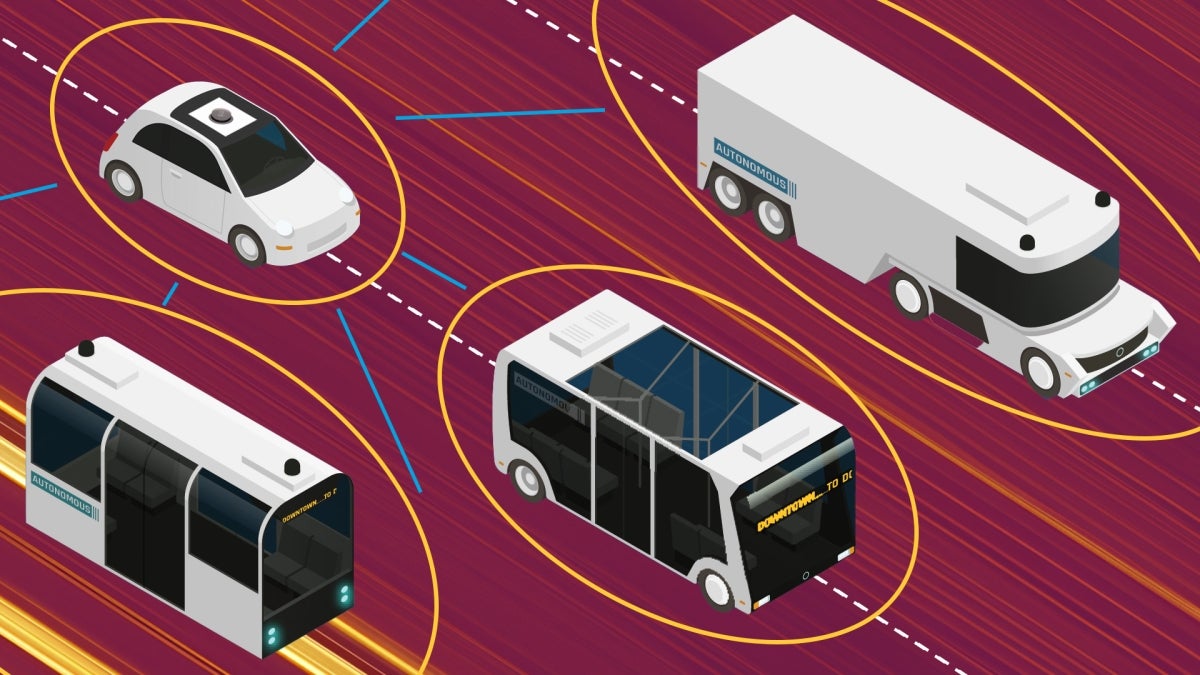
The outlook for the near future of automobile transportation includes more electric and autonomous vehicles. Also on the horizon are vehicles equipped with advanced computing system capabilities, including artificial intelligence technology. Graphic courtesy Shutterstock
Few things shape modern life more significantly than the various factors that determine the scope of human mobility.
“Think of how transportation, or the lack of it, impacts virtually everybody in all areas of their lives,” says Ram Pendyala, a professor of civil engineering and director of the School of Sustainable Engineering and the Built Environment, part of the Ira A. Fulton Schools of Engineering at Arizona State University.
Pendyala’s research expertise includes work on travel demand modeling and forecasting, travel behavior analysis, multimodal transportation planning and new mobility systems design. Those pursuits have shown him that meaningful progress in transportation demands much more than advancing technology and expanding infrastructure.
Transportation “is one of those all-encompassing enterprises,” he says. So tackling its challenges can require gaining knowledge and insight far beyond basic logistics and engineering.
Many of the myriad complexities of government regulations, economics, public safety, environmental impacts and the adoption of new technologies are often involved in the process of addressing transportation needs and issues. The variables of community demographics, priorities, preferences, and political and cultural perspectives also come into play.
Amid such a complicated backdrop, Pendyala and three Fulton Schools colleagues who focus on transportation and related fields are contributing to new and innovative solutions to advance mobility.
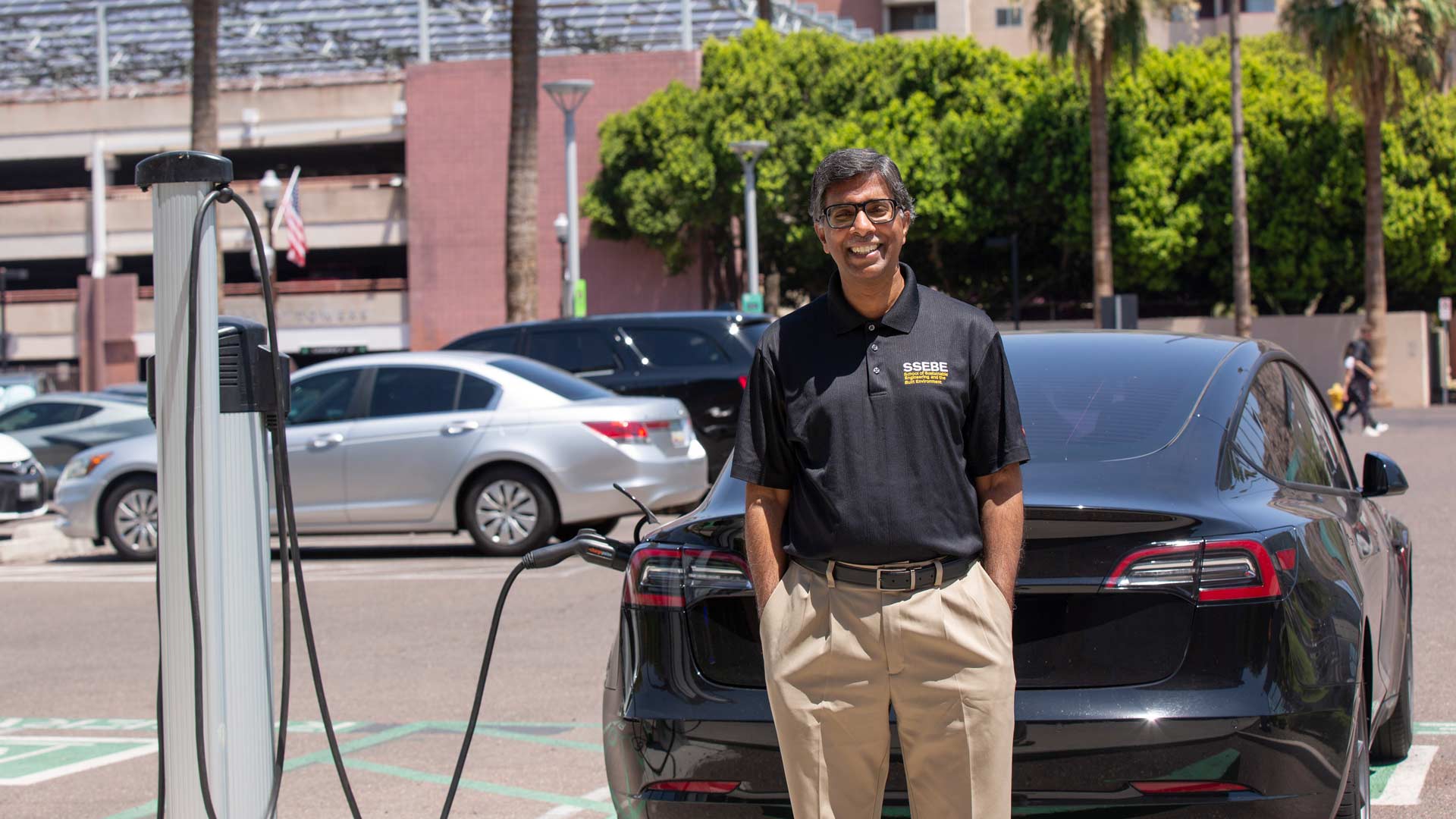
Professor Ram Pendyala, pictured at an electric vehicle charging station on Arizona State University’s Tempe campus, teaches and conducts research in transportation systems engineering, design, modeling and simulation, and related areas. He is on the editorial boards of leading transportation journals, has published more than 200 research articles and served as a consultant for several transportation industry organizations. Photo by Erika Gronek/ASU
Drawing on ASU’s extensive transportation expertise
Among the researchers in the school Pendyala leads are Steven Polzin, a research professor and deputy director of the Center for Teaching Old Models New Tricks, or TOMNET — a U.S. Department of Transportation University Transportation Center that Pendyala directs — and Xuesong Zhou, an associate professor of civil engineering and co-chair of the Technical Committee on Traffic and Travel Management for the Institute of Electrical and Electronics Engineers Intelligent Transportation Systems Society.
Polzin has been a senior advisor for research and technology in the office of the assistant secretary for research and technology at the U.S. Department of Transportation and director of mobility policy research at the Center for Urban Transportation Research at the University of South Florida.
Polzin has also worked for transit agencies in Chicago, Cleveland and Dallas, and his research expertise includes extensive work in transportation policy analysis.
Zhou serves as a board member at Zephyr Foundation, a nonprofit organization dedicated to advancing rigorous transportation and land use decision-making, as well as promoting travel analysis methods and tools through open standards, open science and active community engagement.
Among their ASU colleagues is Pitu Mirchandani, a professor of computer science and industrial engineering in the School of Computing and Augmented Intelligence, part of the Fulton Schools. Mirchandani is an expert in systems optimization, advanced traffic control, vehicle automation and electrical infrastructure design, and has been involved in the transportation field and related research for more than four decades.
Mirchandani also directs ASU’s Advanced Transportation and Logistics, Algorithms and Systems Research Laboratory.
The combined research efforts of these faculty members reflect the expansive range of today’s transportation issues and future mobility aspirations.
Promising advances in automated fuel-efficient self-driving vehicles, electric vehicles, mass transit systems and much more are on many drawing boards, the Fulton Schools researchers say, but progress will likely necessitate navigating through complicated mazes of politics, economics and societal issues.
“There are both many shared and competing visions and missions swirling around the directions that today’s transportation planning and development should be going,” Pendyala says. “That makes it difficult to always get everybody on the same page.”
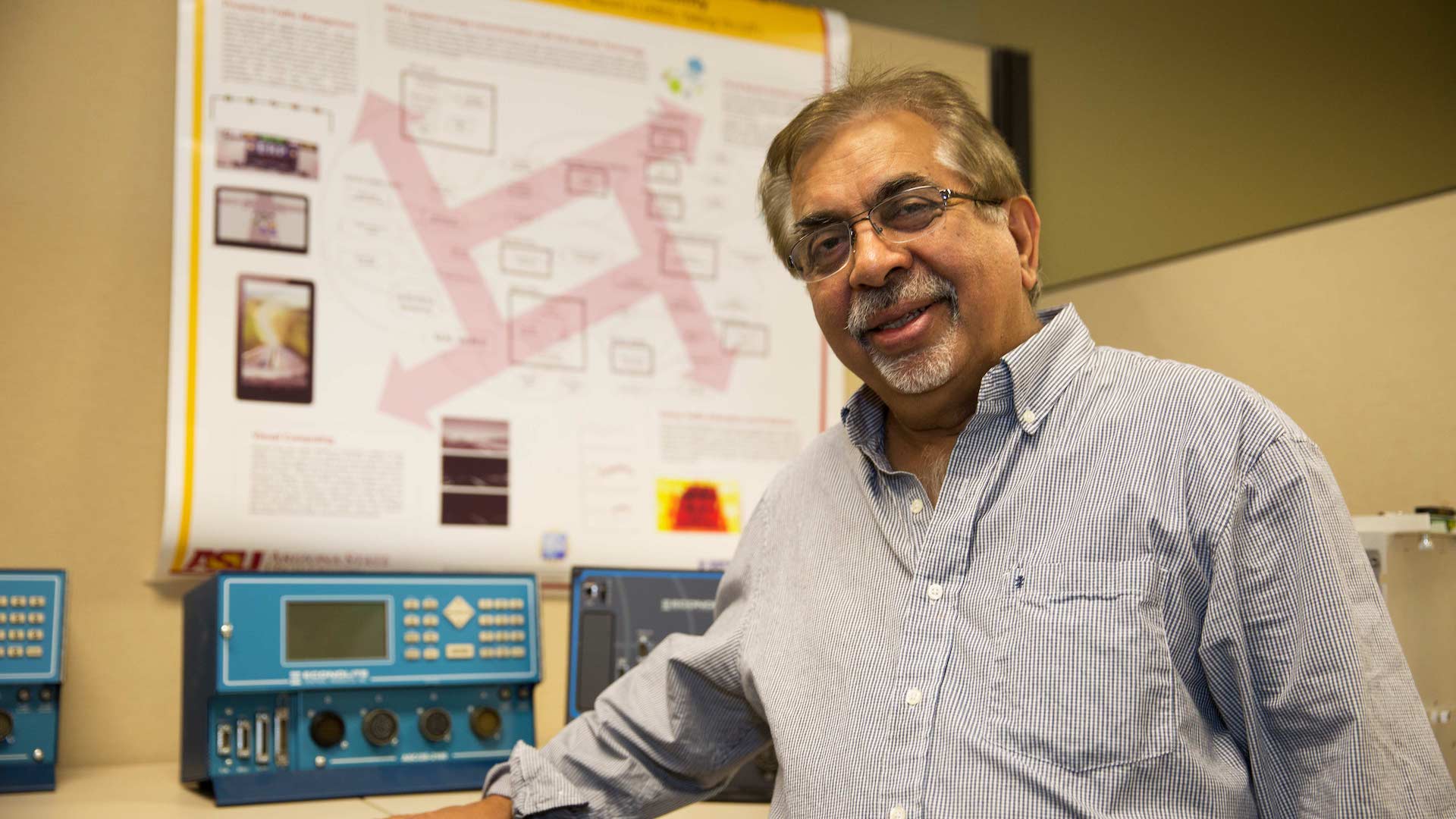
Through more than 40 years of transportation research, Fulton Schools Professor Pitu Mirchandani has contributed to the data, knowledge and technological advances that are setting the stage for the future of human mobility. Photo by Jessica Hochreiter/ASU
Looking at the big picture
A big part of the quest for mobility advances goes beyond technological improvements. It’s also about examining the implications of various potential future transportation scenarios.
“For instance, in an era of widespread vehicle electrification, how do we replace the revenues from gasoline taxes that fund maintenance or expansion of surface transportation infrastructure today?” Pendyala says.
Polzin’s current work involves pondering such questions, along with the many other similar and disparate issues that could reshape the course of transportation.
“I follow business and political news,” Polzin says. “So, I think of transportation in the context of its role in society and how changes in demographics, population migration, technology, personal values, and governance and those kinds of things spill over to influence transportation. The pace of change has ramped up dramatically in all the areas that affect transportation.”
“New technology is really pervading transportation in everything from driving apps and payment mechanisms and navigation systems and safety features in vehicles, to telecommunications, automation and electrification of vehicles, plus the ability to do telework and drive less,” Polzin says.
He also takes into consideration the impact of trends that alter social values and shape views of government, environmental protection, climate change and generally what constitutes quality of life and prosperity.
“We’ve got the perfect storm here of everything changing simultaneously, which makes it challenging to predict the future when things like transportation change faster than our knowledge, understanding and data sets can keep up with all of it,” Polzin says.
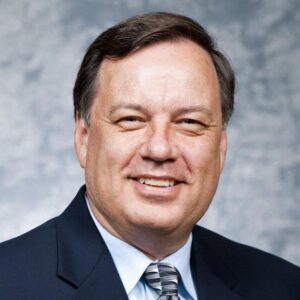
Steven Polzin, a Fulton Schools research professor, has conducted research for clients in the private sector and in state and federal government. Changes in travel behavior are a major area of his current research. He has taught civil engineering with a focus on transportation for more than 30 years.
How data science advances are driving progress
Despite such uncertainties, researchers are optimistic about the potential long-term positive impacts that can result from technologies, models, databases and systems they are improving or creating.
Mirchandani says the expanding capabilities of computing, big data analytics, modeling, design, simulation and automation are broadening the possibilities for developing effective advances in transportation.
Combine those capabilities with emerging technology such as artificial intelligence, for instance, and the horizon for complex problem-solving expands.
“You can gather and analyze massive amounts of data from the movements of many thousands of vehicles and traffic sensors in various locations and use the information to design real-time traffic-control operations on a large scale,” Mirchandani says. “We have the technologies. We just need to apply all of the advances in artificial intelligence and big data analytics and we can make real progress that will minimize accidents and other traffic congestion problems.”
He foresees the possibility of a “marriage of advanced system optimization methods and computational algorithms” laying the groundwork for more efficient and effective transportation management.
Michandani’s optimism is echoed by Zhou, whose expertise is rooted in the application of the most advanced analytics and methodological algorithms to understanding transportation challenges and devising strategies to overcome them.
Zhou says today’s robust machine learning technology can essentially map out remedies to myriad transportation issues, whether they involve automobiles, bike riders, pedestrians, rail and bus systems or additional public transit options.
“With our computing capabilities, my students are able to build open-source tools that can extract the whole driving network for the entire United States and create a realistic representation of our transportation system,” Zhou says. “Then, using search engine optimization, we can provide a look at different traffic situations, some in very precise detail. We can then digitize that network representation for transportation planning, modeling and decision-making.”
These capabilities can enable researchers to provide communities, government officials and others detailed illustrative views of specific traffic, transport and travel scenarios that can function as a framework for developing specific solutions.
“Altogether, these computations are like a field manual that gives you detailed pictures and correlated data to guide in solving problems in different kinds of transportation environments,” Zhou says.
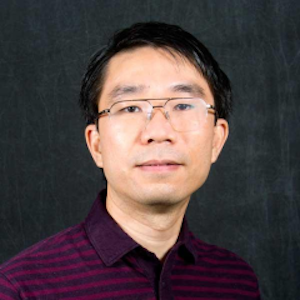
Fulton Schools Associate Professor Xuesong Zhou is the principal developer of the high-tech traffic assignment and simulation engine DTALite, as well as OSM2GMNS, a traffic network data processing package. These tools have been used by numerous transportation planning agencies.
Ideas to guide sustainable future mobility
Each of the Fulton Schools researchers emphasize that more than technical hurdles must be surmounted if transportation advances are to adequately serve all communities.
Zhou says that requires concerted efforts to implement solutions and improvements that serve all populations across the socioeconomic spectrum.
The researchers point out that people living in some areas bear the brunt of the impacts of fossil fuels on the environment, and some neighborhoods see fewer benefits of transportation infrastructure improvements.
“Achieving true sustainability in transportation means taking social equity into account.” Pendyala says. “We have to ask who is being underserved or adversely impacted.”
Pendyala says the best possible scenario for the future for mobility is one that will fully leverage the technological evolution that science and engineering can achieve while also bolstering collective ideals of equality and economic prosperity.

